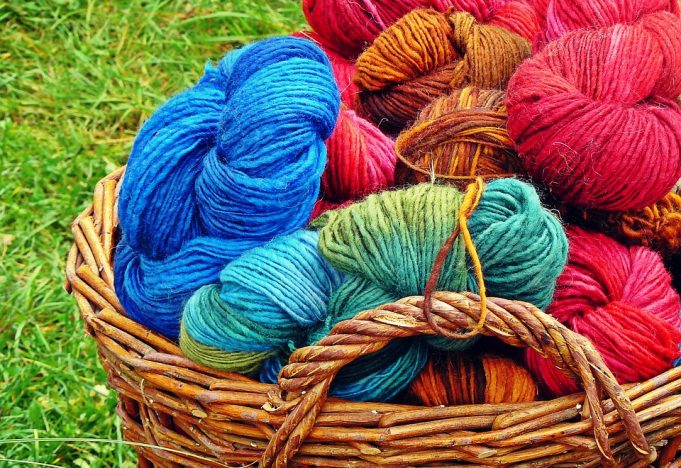While there are many different sizes and styles of knitting yarn available, there are certain terms that are common no matter what type of yarn you are knitting with. While the different terms do not apply equally to all of the different types of knitting yarn, they will be helpful in determining what type of knitting yarn you want to work with for your next knitting project. Now in the beginning when you are going through every pattern step-by-step, this may not be such a major concern for you. However, when you begin testing and trying new knitting techniques, it may help to have some basic knowledge regarding what all that gibberish on the skein of yarn really means.
Resilience or Elasticity of Knitting Yarn
The resilience or elasticity of the knitting yarn is based on how capable the yarn is of “bouncing back” or assume the same shape that it originally was in after it has been stretched out. Some yarns like merino wool are naturally resilient while others like silk and many types of cotton knitting yarn are not very resilient at all or have very little elasticity. Another key point here is that many types of knitting yarn with a very low level of elasticity will be more difficult to knit with for some people. Keeping the tension even with less resilient knitting yarn has been known to cause hand cramps and worse for some knitters.
Breathability
The “Breathability” of the knitting yarn is based upon how easily air passes through from one side of the yarn to the other. This can be deceiving on some occasions as logically it would seem that many of the bulky or chunky knitting yarns would naturally be more breathable due to their use of larger, often looser fibers that have been spun into the yarn. However, lanolin and other naturally occurring oils and substances may prevent even some bulky weight knitting yarn from being too breathable.
Dyeability
The actual dyeability of knitting yarn is its ability to absorb dyes, preferably distributed equally among the fibers and strands so that the coloring is consistent and even throughout the knitting yarn and the entire batch. This may not be important if you are only using pre-dyed knitting yarn but for those people who really like to get their hands dirty … both literally and figuratively, this can be an important issue. More and more people are spinning and dyeing their own yarn. While you will not see this on the outside of many skeins of knitting yarn, you may still want to know it for future use.
Absorbency
The absorbency of the knitting yarn is very relevant to whether or not the knitted garments will be better suited to warm weather, cold weather or other uses as well as how well it will protect and how comfortable it will be. The absorbency is the ability of the yarn to absorb or hold liquids … generally such as sweat or rain. A super-absorbent knitting yarn may not be ideally suited to making a winter sweater as the snow would quickly be absorbed by the knitted garment and the person wearing it would likely get very cold.
This list is not by any means meant to be a complete listing of all of the different types of knitting yarns but it should give you enough information to get started. While it may be tempting or even necessary to follow the knitting pattern from start to finish at the beginning, eventually almost everyone who takes up knitting will want to “get out on their own” and try something different with new knitting yarn in place of the old. http://www.articlesbase.com/needlework-articles/knitting-yarn-common-terms-2093620.html

















